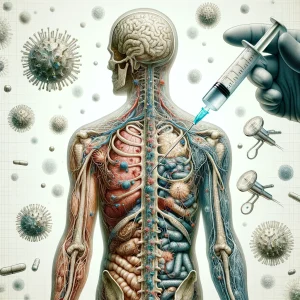What is Meningococcal Prophylaxis?
Meningococcal prophylaxis is a targeted antibiotic regimen provided to healthy individuals who have had recent, direct contact with a person sick with invasive meningococcal disease. The primary goal of this intervention is not to treat a present illness, but to rapidly eradicate any Neisseria meningitidis bacteria that the exposed person might be silently carrying in the back of their nose and throat. This state, known as nasopharyngeal carriage, can exist without producing any symptoms but serves as the launch point for a dangerous invasive infection.
This preventive action functions as a chemical firewall, aiming to destroy the bacteria before they can breach the body’s defenses to enter the bloodstream or the membranes around the brain. It is important to distinguish prophylaxis from vaccination. Vaccination builds long-term, active immunity for future protection, whereas prophylaxis is a short-term, immediate measure to eliminate a specific, recent bacterial exposure. It offers no lasting defense against the disease.
Causes:- Confirmed Diagnosis in a Contact: The entire process is initiated only after a laboratory confirms that a patient is ill with a systemic infection caused by the bacterium Neisseria meningitidis. This diagnosis activates a public health investigation to trace that person's recent contacts.
- Direct Exposure to Respiratory Secretions: The fundamental reason for prophylaxis is the high likelihood of bacterial transmission. The bacteria are spread through direct contact with an infected person's oral or nasal droplets, such as through kissing, sharing utensils, or being coughed or sneezed on at very close range.
- Meeting Specific "Close Contact" Criteria: Public health authorities use strict definitions to determine who requires this intervention. Prophylaxis is reserved for those with the most intense exposures, which includes individuals living in the same household, intimate partners, and, in some cases, children in the same childcare group. Casual contact, such as sitting in the same classroom or office, does not meet the threshold.
- Household Members and Roommates: Individuals who share the same living space as the infected person are considered to be at the highest risk. The prolonged, close-quarters contact inherent to living together provides numerous opportunities for the exchange of respiratory secretions.
- Intimate Kissing Contacts: Anyone who has engaged in deep kissing with the infected individual in the week prior to their illness is a priority for prophylaxis. This act represents a direct and highly efficient method for transferring bacteria from one person's oral cavity to another's.
- Childcare and Preschool Contacts: Young children attending the same childcare facility as the ill child may be recommended for prophylaxis. This is because the nature of interaction among toddlers and preschoolers often involves close physical contact and the sharing of toys that may be contaminated with saliva.
- Healthcare Professionals with Unprotected Exposure: Medical personnel who have had direct, unprotected contact with an infected patient's respiratory secretions are at risk. This specifically includes those who performed high-risk procedures like intubation or airway suctioning without wearing an appropriate mask.
- Military Recruits and College Dormitory Residents: In certain outbreak situations, individuals living in crowded institutional settings like military barracks or specific college dorm floors may be considered for mass prophylaxis. These environments can facilitate rapid transmission of the bacteria among a large group.

